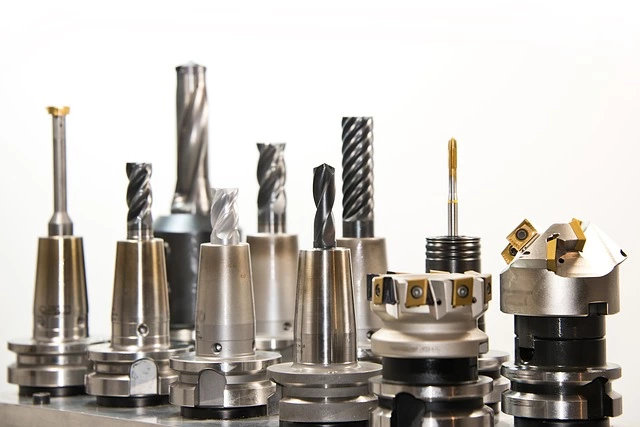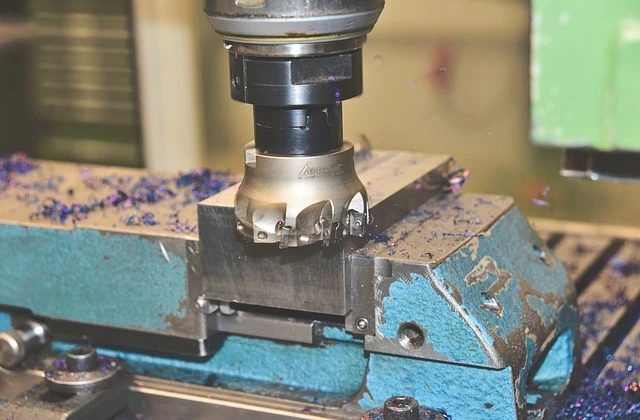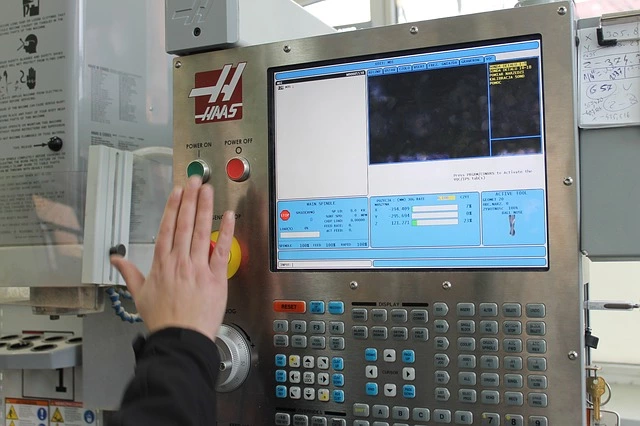Drilling
The drilling process makes holes in the metal through circular cylinders. It comes with a twist drill model for this task and removes the metal cutting material through the drilling operation. The drilling tool penetrates the workpiece creating a hole of the same size as the diameter of the tool used for cutting. It features a pointed end that cuts a hole in the workpiece.

Turning
Turning is a lathe tool that runs an operation, removing the metal from the workpiece outside its diameter. It makes use of a cutting tool, on a lathe, where the machine adjusts the workpiece. The tool remains stationary while the workpiece is rotated. Lathes are meant for the turning operation and help in cutting the metal in a precise way. The workpiece is on the chuck, and the machine rotates the stationary tool to cut the unwanted parts from the piece.
Milling
Milling is one of the standard operations in machining. The milling process is less accurate than the turning process. The degree of freedom is high and makes objects that are not axially symmetric. Use a milling machine for this purpose with a fixture, cutter, and workpiece. The workpiece is a material that is already shaped and needs milling and secures the material to the fixture, as you prepare to mill.
Secure the cutter to the machine. Stay away from the sharp teeth since it rotates at high speed. Feed the workpiece to the drilling cutter, and that is when it removes the unwanted metal from the piece.
Grinding
The grinding process improves the finish of the surface and tightens up the tolerance. It removes unwanted materials from the surface. Grinding machines also produce parts of identical shape, size, and finish during this process.

CNC machining processes
A CNC milling machine uses a rotating cutter in a cylindrical shape. The plasma cutter moves in multiple Axes and creates slots and holes in the material that later turns into a part. Milling machines operate on three to five axes, making precise cuts and more detail than on 2 Axis.
Modern CNC milling machines are either horizontal or vertical machine centers. They accommodate plastics, ceramics, and composite materials. Multiple technical features are part of the milling machine, such as automatic tool changers and magazines.
Coolant systems have longer hours of operating the machine without feeling the heat. The plasma machines run without manual help, reducing fatigue since the user is more of an operator than running the plasma machine. The vertical milling machine has a vertically oriented spindle axis.

It has long and thin cutting tools, whereas the horizontal machine has shorter and thicker cutting tools. Vertical plasma machines are more versatile than horizontal machines. CNC milling machines come in different sizes that fit multiple sizes and businesses. It is reliable, and you should consider your needs before one.
Secondary machining processes
It is for the manufacturing of everyday products and components. Production machines that produce them need to be efficient and safe. Give the products specifications that meet the necessary criteria. Machine operators must be aware of different secondary machining processes for better results.
A secondary machining process is where raw material or a component is taken for further working. The process involves material removal and is done after a primary forming process. The machine aims to provide learners with a detailed knowledge of secondary machining techniques. The machines include lathes, mills, and grinding machines.
The unit allows learners to examine secondary machining techniques, design, and their application. This unit helps you operate a secondary machine and manufacture any product. The learner has to carry out machining activities in an engineering environment. It simulates how to operate within a machining workshop, follow all codes of conduct, and work safely in manufacturing.
Types of machining processes
- Turning
- Drilling/Boring/Reaming
- Milling
- Grinding
- Planing
- Sawing
- Broaching
Non-traditional machining processes
Non-traditional manufacturing processes use mechanical, thermal, electrical, or chemical energy techniques.
Do not use sharp cutting tools because they are for traditional manufacturing processes. The introduction of non-traditional machining came with the abandonment of conventional methods. These are the basis of the machining process.
Electro-discharge machining (EDM)
Electro-discharge machining uses non-traditional methods of machining. They are known as spark erosion and spark machining. It works on materials and the material discharge by energy variation. The workpiece is connected to the positive terminal, as it acts as an anode. Connect the tool to the negative terminal and serve as the cathode.
Electron Beam Machining (EBM)
Electron beam machining is the process of machining in which an electron beam removes the metal from the workpiece. The workpiece is in a vacuum chamber and focuses on the workpiece. As the electron strikes the surface of the workpiece the temperature of the contact point increases.
Plasma Arc Machining (PAM)
Plasma arc machining is an affordable process of machining. It uses plasma for cutting the workpiece. The gases from a mixture of positively charged particles, neutral particles, and negatively charged particles. A mixture of partially ionized gas is called plasma. The plasma is for the cutting purpose.
Laser beam machining (LBM)
Laser beam machining is a popular machining type. When the laser beam is focused on the workpiece, it increases the temperature at the point of contact. The temperature produced is more than the melting point, which evaporates the metal at the surface.
Advanced machining processes
Advanced machining processes use a well-guided wedge-shaped tool that removes the material in chip form by producing contact stresses. It uses the thermal effect to melt or vaporize the material.
There are multiple ways to remove material using these processes. One method is producing stresses in the workpiece in different ways. These are ultrasonic machining, water jet machining, and abrasive jet machining. Another method is utilizing the thermal effect to melt or vaporize the material. Use laser beam machining, electron beam machining, and electrical discharge machining.
Machining process in manufacturing
Machining refers to a collection of machine-based manufacturing. It involves the controlled removal of material from a workpiece. The process changes its size and shape. Manufacturers use a machine to remove material from a workpiece until they get the desired size and shape.
Conventional machining process
The conventional milling machine features a cutter that rotates against the direction of the feed. Conventional milling is the standard approach when cutting, and backlash is eliminated and reduces the load from the cutting edge. That is how it leaves a better surface finish.
- Grain and Sheen: Teak Oil versus Danish Oil Uncovered - January 10, 2024
- The Cherry on Top: Crafting the Perfect Cutting Board - January 9, 2024
- Polyurethane Water-Based vs Oil-Based: Choosing the Right Finish - January 8, 2024